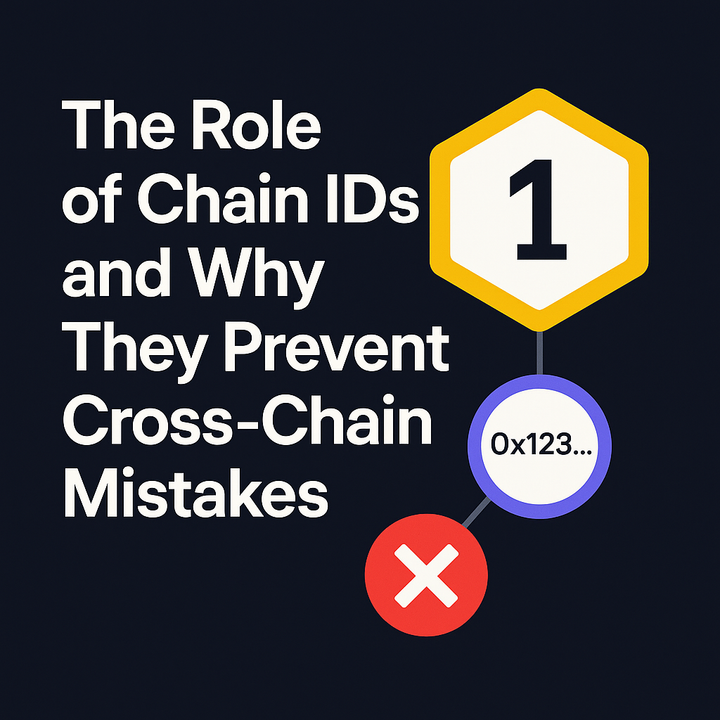Sharp Drop of ZKJ Token (Polyhedra): What Were the Reasons

The cryptocurrency community was taken aback when ZKJ, the native token of Polyhedra Network, experienced a sharp price dump in mid-June 2025. Within hours, ZKJ plummeted by over 80%, falling from around $1.9 to roughly $0.32. This crash wiped out an estimated $500 million in market value, stunning investors and raising questions about what went wrong. In this article, we break down the reasons behind ZKJ’s sudden collapse, exploring the launch hype, venture capital (VC) dynamics, token listing strategy, and key takeaways regarding short-term risks in zero-knowledge (ZK) crypto projects.
Background: Hype Around ZKJ’s Launch
Polyhedra Network is a crypto project building infrastructure with zero-knowledge proof (ZK) technology, which had garnered significant buzz. When its ZKJ token launched (initially around late 2024), it quickly gained attention from investors excited about ZK-based projects. Zero-knowledge proofs allow one party to prove something is true without revealing details, a cutting-edge tech in blockchain for privacy and scalability. The association with ZK likely fueled speculative interest in ZKJ. In fact, the token’s price peaked as high as $4 in March 2024 amid the early hype, reflecting optimism that Polyhedra’s tech could be revolutionary. Adding to the excitement, Polyhedra had achieved “unicorn” status (over $1 billion valuation) by 2024, indicating strong backing by investors. The project’s high-profile funding, combined with a bullish crypto market, created an atmosphere where many traders wanted a piece of ZKJ. For a time, ZKJ hovered around $2 for months leading up to the crash, suggesting that early investors and the community were holding expectations of further growth. However, high launch valuations and hype can set the stage for volatile corrections. Crypto newcomers should note that a token’s popularity at launch doesn’t guarantee price stability. When underlying liquidity and market structure are weak, even a hyped token can face steep declines.
VC Dynamics and Token Listing Strategy
Another factor in ZKJ’s story is the role of early investors and how the token was introduced to the market. Polyhedra’s backers included notable crypto venture funds and market makers. For example, Wintermute, a well-known algorithmic trading firm and liquidity provider, was involved with ZKJ. During the crash, a Wintermute-associated wallet deposited over 3.3 million ZKJ tokens into exchanges around the time of the collapse. Such a large deposit implies that a major holder was potentially preparing to sell or provide liquidity, which can significantly influence price. It’s common in crypto for VCs and early investors to receive allocations of tokens before public trading (often at low prices). When lock-up periods end or when those tokens can be moved, large holders might sell some of their position, putting downward pressure on price. In ZKJ’s case, a substantial token unlock of about 15.5 million ZKJ occurred around the time of the crash. This sudden increase in circulating supply increased selling pressure, as some early holders likely took profits. Beginners should understand that token unlocks (scheduled releases of vested tokens) are events that can lead to price volatility if not managed with sufficient market demand. The listing strategy for ZKJ also played a role in its vulnerability. Rather than being listed on many big exchanges with deep liquidity, ZKJ’s primary markets were relatively limited. A key trading venue was a decentralized exchange (DEX) pool on PancakeSwap involving ZKJ and another token called KOGE. Liquidity in this pool was “fragile and imbalanced,” meaning there wasn’t a lot of depth to absorb big trades. Additionally, ZKJ was available on a few centralized exchanges like Bybit, but it wasn’t universally listed. This combination of few trading venues and shallow pools set the stage for a liquidity crunch: if a few large holders pulled funds or sold, there were not enough buy orders to support the price. In summary, VC dynamics (like token unlocks and large holder moves) and listing choices (limited venues, low liquidity pools) made ZKJ’s market structure fragile. For new crypto investors, this highlights a lesson: when a token is mainly traded in illiquid pools or held by a small number of large players, its price can swing dramatically with little warning.
Immediate Causes of the Price Crash
The immediate trigger for ZKJ’s 80%-plus plunge appears to have been a combination of coordinated selling and liquidity removal in essence, a “perfect storm” for a price crash:
- Coordinated Liquidity Attack: Polyhedra’s team reported that several wallets appeared to act in concert to drain liquidity from the ZKJ/KOGE pool on PancakeSwap. In a DEX liquidity pool, users provide pairs of tokens (here ZKJ and KOGE) to facilitate trading. If a big provider yanks out their tokens suddenly (“removing liquidity”), it leaves the pool thin. According to Polyhedra, malicious actors withdrew large amounts from the ZKJ/KOGE pool, causing the price support to collapse and followed this with “aggressive ZKJ sell-offs.” With few buy orders available, each sale pushed the price drastically lower.
- Large Holder Sales (Wintermute’s Role): At least one major player, associated with Wintermute, deposited millions of ZKJ onto exchanges just as the crash was unfolding. While Wintermute’s co-founder later claimed they were hedging (selling spot ZKJ while going long in futures) rather than simply dumping, the market still had to absorb a huge influx of tokens being sold. Whether intentional or as part of an automated strategy, such a move added to the downward momentum. Big sales by early investors often spook other traders, leading to a broader sell-off as everyone rushes for the exit.
- Cascading Liquidations: The rapid price drop triggered liquidations of leveraged positions on exchanges. Many traders had taken margin loans or futures contracts betting on ZKJ’s price. When the price fell too far, their collateral wasn’t enough, and exchanges automatically sold off their ZKJ to cover losses (this is a liquidation). About $94 million worth of long positions (bets that price would rise) were force-sold in a short period, further flooding the market with sell orders. This created a vicious cycle: falling price ⇒ liquidations ⇒ more forced selling ⇒ even lower price.
- Token Unlock and Increased Supply: As mentioned, a scheduled unlock released 15.53 million new ZKJ tokens into circulation around the same time. While not an attack per se, this timing meant there were a lot more tokens available just as panic set in. Some holders of those newly unlocked tokens might have rushed to sell amid the chaos, adding fuel to the fire.
It’s worth noting that during the turmoil, Polyhedra’s team initially pointed fingers at external factors even suggesting the KOGE token “rugged” them. KOGE, the Binance Chain governance token tied to the liquidity pool, also saw its price plummet from about $62 to $24. The KOGE community denied intentionally dumping ZKJ. While the he-said-she-said isn’t fully resolved, the lesson remains: interconnected tokens and pools can create contagion. If one part (like KOGE or a particular pool) fails or is manipulated, it can drag down the linked token. Polyhedra responded by injecting $30 million of their own funds (in stablecoins and BNB) to shore up liquidity and announced an upcoming buyback plan to restore confidence. These steps helped ZKJ’s price rebound partially, but volatility remained high. For investors, seeing a project team step in is somewhat reassuring, but it also underscores how dire the situation became.
Key Takeaways: Short-Term Risks in ZK Projects
The ZKJ crash offers several cautionary lessons for crypto investors, especially those enthusiastic about newly launched projects in hot sectors (like ZK tech):
- Hype Can Overshadow Fundamentals: Excitement around ZK technology and big-name backers drove ZKJ’s price up initially. But hype is a double-edged sword. When real liquidity and usage don’t match the lofty valuation, a token can crash hard. Always evaluate if a project’s adoption and token economics justify its market cap, rather than buying in solely due to buzz.
- Concentrated Holdings = Higher Risk: ZKJ’s fate was heavily influenced by a few large holders (whales) and possibly bots. In fact, on-chain evidence from the ZKJ crash indicated that just three wallets collectively withdrew large amounts of liquidity and dumped tokens (on the order of millions of dollars) during the event. When only a few players control a big slice of the supply or liquidity, they can move the market abruptly if they act in unison. Diversified ownership and deep liquidity across many holders make for a more stable token.
- Liquidity Matters (A Lot): A token’s price is only as robust as the markets trading it. In ZKJ’s case, thin liquidity in a PancakeSwap pool meant the token was vulnerable to “liquidity attacks” and large withdrawals. Beginners should check trading volume and liquidity pools for tokens they invest in. Low liquidity tokens might surge upward fast, but they can also crash overnight because it doesn’t take much to overwhelm order books or pools.
- Beware Leverage on New Tokens: The presence of $94M in leveraged longs on ZKJ indicates many traders were speculating with borrowed money. This leverage amplified the crash. Using margin or futures on a newly launched or volatile token is extremely risky – a single event can liquidate positions and cascade. For those interested in new projects, a safer approach is to invest only what you can afford to lose without leverage, at least until the market for that token matures.
- Short-Term vs Long-Term Outlook: In cutting-edge areas like zero-knowledge crypto, projects may have strong long-term technology prospects but very volatile short-term token performance. Investors in ZK projects should be prepared for turbulence. It might take time for the real utility of ZK technology (e.g., faster blockchains, privacy applications) to translate into stable value. In the interim, factors like VC unlocks or speculative trading can dominate price action.
In conclusion, the ZKJ token’s sharp drop was a product of both structural weaknesses and adversarial market actions. While Polyhedra’s technology and vision remain (the team insists the fundamentals are sound and they continue to build), the incident highlights how crypto markets can punish tokens lacking a resilient market structure.



Comments ()